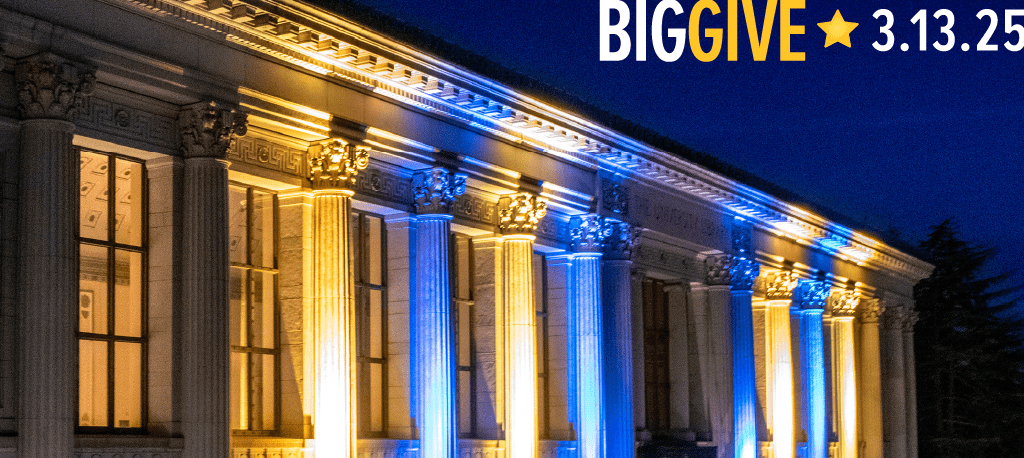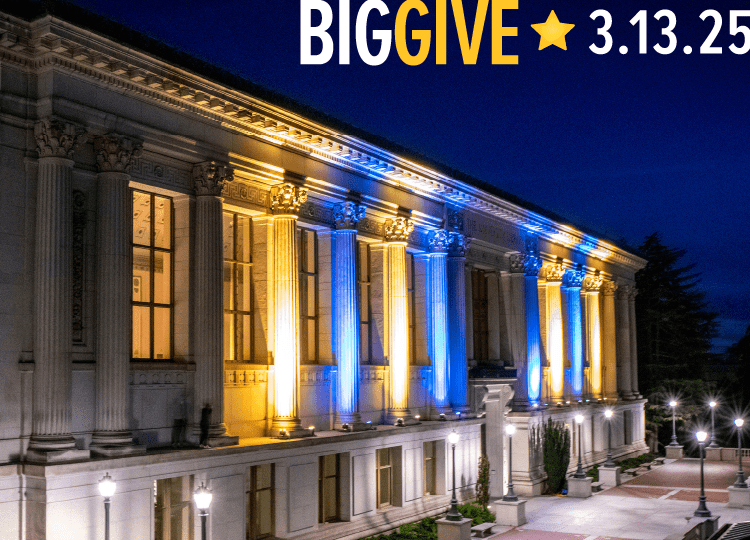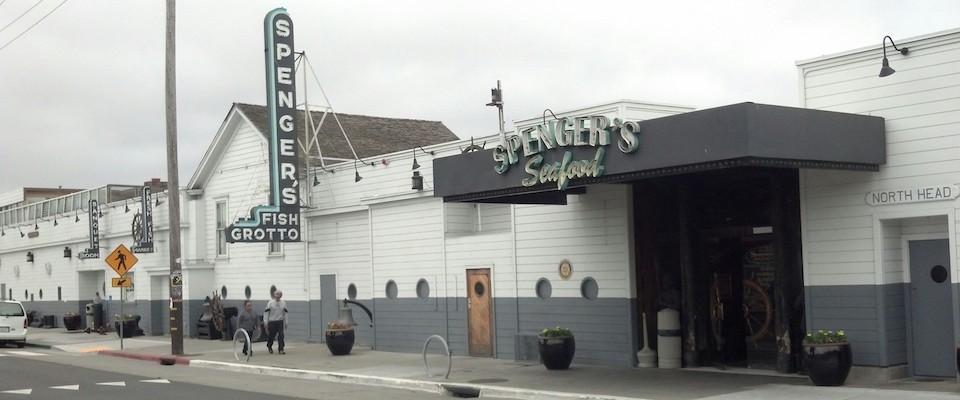Say goodbye to another bit of old Berkeley: Spenger’s Fresh Fish Grotto, the oldest restaurant in town, shut its doors on October 24, joining two other landmarks: Brennan’s, which closed in September, and H’s Lordships, which shuttered in June.
Spenger’s customers arrived to find a piece of paper taped between the handles of the ship’s wheel on the front door, announcing the venerable eatery’s “permanent” closure. And so ends an institution.

For 128 years, Spenger’s served some of the Bay’s finest seafood to generations of stevedores, students, Nobel laureates, and everyone in between. At its high point, the former fish market turned restaurant claimed to be selling 3,500 pounds of fresh fish per day.
“It was old-fashioned without any pretense…and the food was reliably good,” says journalist Randy Alfred, who was a grad student at UC Berkeley in the late ’60s. “It was the kind of restaurant you took your parents to.” He added, “But I haven’t been there in 30 years, which is probably an indication of why they closed.”
Novelist Erik Tarloff, whose most recent volume, All Our Yesterdays, includes a memorable scene set at Spenger’s, recalls a decidedly more downscale breakfast crowd when he was a Cal undergrad in the late ’60s.
“A bunch of fishermen would be there having a shot and a beer every morning before going out to fish for the day—sailor types and their women, who were frequently bleached blonde and overweight, keeping up with the guys drinking.”
Tarloff was there for the food, not the drinks. “They had a great pan-fried trout and eggs. And the Hangtown fry, which was oysters and bacon scrambled with eggs. They also had a very good shrimp omelet—God, I’m getting hungry just talking about it!”
Longtime Oakland Tribune sports columnist Dave Newhouse remembers hearing from a bartender who heard from a liquor distributor that Spenger’s “did the best bar business west of the Mississippi River.” Which Newhouse found believable “because the bar crowd was always backed up three deep.”
The service, on the other hand, was a mixed bag. “It was very brisk,” Tarloff says. “I was told by Patty Unterman (owner of the Hayes Street Grill) that they had the fastest turnover rate of any restaurant in the U.S. The waiters were efficient, and pretty damn rude. Not hostile, but there was no attempt at being ingratiating.”

“My strongest recollection is the hostess,” adds journalist Kate Coleman, who graduated from Cal in 1965. “After taking our names, she’d bellow, ‘Two in the Teak Room!’ which for some reason I found hilarious.”
It all started a century earlier when a young immigrant from Bavaria named Johann Spenger arrived in the United States and settled in Oakland, where he made a decent living fishing in Lake Merritt—then teeming with oysters, mussels, clams, crabs, shrimp and fish. He sold his catch to local markets, and as Oakland’s population boomed, so did his business.
Before long, Johann owned a small fleet of fishing boats and later moved his family to Berkeley, where he built a house of many gables on what was then called the Fourth Street mud flats. They lived on the upper floors, and on the ground floor he opened a restaurant and fish shop featuring clam chowder, baked beans, and ten-cent beer. His customers ranged from dockworkers and fishermen to socialites, Cal professors, and students on a tight budget.
Johann trained his son Frank to take over from him, and Frank learned the business from the ground up, working every job from dishwasher to fisherman. Frank, in turn, trained his son Frank Jr.—known to everyone in the family as Buddy—just as his father had trained him.
For years Buddy and his wife Millie personally harvested clams and oysters for the restaurant every morning near their home in Tomales Bay. They’d get up before dawn, harvest the day’s catch, and drive the mollusks two hours to Berkeley for the evening’s menu.
According to Muriel Burnham, who worked as the restaurant’s phone operator and later in the retail store, it was Buddy who accidentally invented Spenger’s trademark dish, the Shrimp Scatter. One day while trying to make shrimp cakes, he put them in the deep fryer only to have them crumble into little pieces. Everyone else was for throwing the stuff away, but Buddy said, “Let’s call it ‘Shrimp Scatter’ and sell it as is.” It immediately became Spenger’s biggest seller and remained so until the day the restaurant closed.

Buddy also turned the restaurant into an eccentric nautical museum, adorning the teak walls with ship’s wheels, anchors, rigging, paintings, and historical photographs. The walls and floors were salvaged from two shipwrecked vessels, the Encinal and the Lurline. Customers could admire binnacles, range finders, clinometers, life rings, an enormous gun collection in glass cases on green felt, ship models of every description, and a bronze plaque commemorating the rescue of American soldiers from Siberia after the ill-fated Polar Bear expedition of 1919.
But the highlight, according to a 2011 newsletter from the Berkeley Historical Society (BHS), was a marble-sized, 37-carat diamond called the Star of Denmark, which Frank Sr. carried in a tailored watch pocket and would show off to patrons at the bar. The diamond originally belonged to King Kalakaua of Hawaii, who received it from Queen Victoria as a parting gift after his visit to London in the late 1880s. On his way home, he stopped off in California where, the BHS claims, he promptly lost the diamond in a poker game in Santa Cruz. How it came into Frank’s possession some 20 years later is unknown.
After his death, story has it, the gem was placed in a burglarproof viewing case in the Oyster Bar, where hundreds of customers would wait for a table.
Over the years, Spenger’s served not only the locals but also the rich and famous. Jerry Brown, who, after being sworn in for his first term as governor on January 6, 1975, drove from Sacramento to Berkeley to celebrate his inauguration at Spenger’s with his family, including his father, former Governor Pat Brown.
“It was old-fashioned without any pretense,” says journalist Randy Alfred. “It was the kind of restaurant you took your parents to.”
Other regulars, as listed in an earlier BHS newsletter, included Clark Gable and Carole Lombard, who drove up the coast for trysts at the Claremont Hotel and dinner at Spenger’s; Ernest Hemingway; Errol Flynn; Jack Dempsey, Spencer Tracy; Olivia de Havilland; Myrna Loy; Charles Laughton; Melvin Belli; and bandleader Harry James and his wife, Hollywood bombshell, Betty Grable, both avid horse racing fans who would dine at Spenger’s after spending the day at Golden Gate Fields.
In more recent years, the restaurant also played host to Joan Baez, Huey Lewis, and Robin Williams. It even fed one celebrity before he became famous: Tom Hanks, who worked as a bellhop in a nearby hotel.
According to local historian Dave Weinstein, history was made there, too. His 2008 book, It Came From Berkeley: How Berkeley Changed the World, claims physicists J. Robert Oppenheimer and Edward Teller hashed out details of the atomic bomb over dinners at Spenger’s. To quote: “It was at Spenger’s that Teller discussed his idea for a ‘Super-Bomb’—later called the H-Bomb—and warned that its detonation might set off a chain reaction that would incinerate the planet.”
In 2001 the City of Berkeley designated Spenger’s a historic landmark. The following year, a stroke forced Buddy to retire, and he donated the restaurant’s fishing boat fleet to the Sea Scouts and announced that Spenger’s would close for good.
But Landry’s/McCormick & Shmick, a management group specializing in upscale restaurants, bought the place and retained Buddy as a special consultant. One year and a $5 million facelift later, the restaurant re-opened. But it was never able to recapture its old customer base, many of whom had moved to Contra Costa County.

Other factors contributing to its decline include the rising cost of seafood, competition from nearby nonunion restaurants, bans on smoking in the restaurant and bar, dining preferences that veered away from Spenger’s traditional deep-fried cuisine, and Buddy’s death in 2003, which severed the last link to the restaurant’s history.
The final blow might have been a decision by the City of Berkeley this past September to reject the management group’s application to build a 260-unit housing complex in Spenger’s block-long parking lot across the street—a site that city officials and Native American groups say was directly atop the West Berkeley Shellmound, a designated archaeological landmark.
As for the restaurant’s maritime artifacts, including the Star of Denmark, their fate remains to be determined. The Berkeley Historical Society, among others, has indicated an interest in them. A Landry’s spokesperson said no decision has been made.
“Throughout the years, the restaurant was always a place for a special occasion with family,” says Julia White, Senior Curator of Asian Art at the Berkeley Art Museum. “I well remember the floors covered with peanut shells and the nautical décor. I hated it when it was sold to a chain. It lost all its distinctive character, and the food was terrible.”
Says novelist Tarloff, “I think the thing I’ll miss the most about Spenger’s is its noticeably idiosyncratic smell. I don’t know if it was because the place was made from ship’s timbers or what they were cooking in the kitchen, but it had an oceanic odor that I kind of liked. It felt like a greeting when you came in.”





















